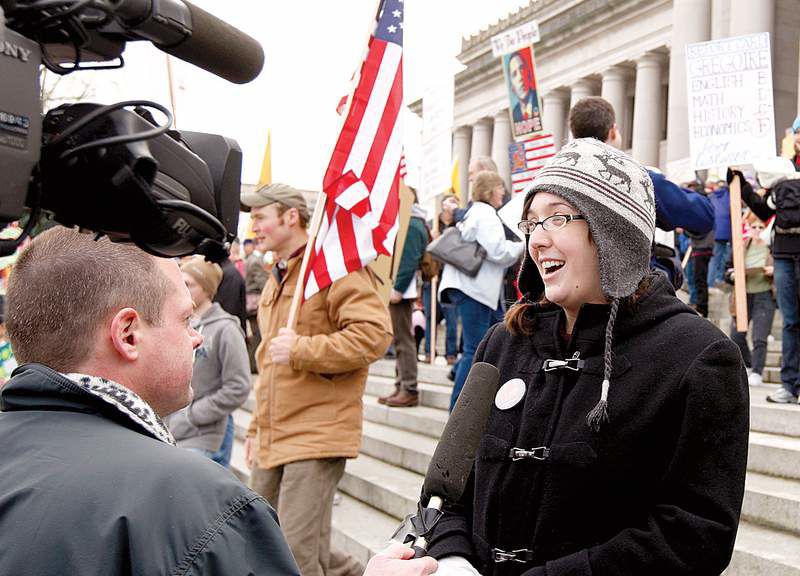Early arrival to Tea Party: a young, unlikely activist
Published 4:00 am Sunday, February 28, 2010

- Keli Carender, being interviewed during a protest against new taxes earlier this month in Olympia, Wash., has been cited as the original Tea Party advocate.
SEATTLE — Keli Carender has a pierced nose, performs improv on weekends and lives here in a neighborhood with more Mexican groceries than coffeehouses. You might mistake her for the kind of young person whose vote powered President Barack Obama to the White House. You probably would not think of her as a Tea Party type.
But leaders of the Tea Party movement credit her with being the first.
A year ago, frustrated that every time she called her senators to urge them to vote against the $787 billion stimulus bill their mailboxes were full, and tired of wearing out the ear of her Obama-voting fiance, Carender decided to hold a protest against what she called the “porkulus.”
“I basically thought to myself: ‘I have two courses. I can give up, go home, crawl into bed and be really depressed, and let it happen,’” she said this month while driving home from a protest at the state Capitol in Olympia. “Or I can do something different, and I can find a new avenue to have my voice get out.”
As Tea Party members observe the anniversary of the first mass protests nationwide this weekend, Carender’s path to activism offers a lens into how the movement has grown.
Carender’s first rally drew only 120 people. A week later, she had 300, and six weeks later, 1,200 people gathered for a Tax Day Tea Party. Last month, she was among about 60 Tea Party leaders flown to Washington to be trained in election activism by FreedomWorks, the conservative advocacy organization led by Dick Armey, the former House Republican leader.
This month, a year to the day of her first protest, Carender stood among a crowd of about 600 on the steps of the state Capitol, acknowledging the thanks from a speaker who cited her as the original Tea Party advocate.
The daughter of Democrats who became disaffected in the Clinton years, Carender, 30, began paying attention to politics during the 2008 campaign, but none of the candidates appealed to her. She had studied math at Western Washington University before earning a teaching certificate at Oxford and began reading more on economics, particularly the writings of Thomas Sowell, the libertarian economist, and National Review.
Reading about the stimulus, she said, “It didn’t make any sense to me to be spending all this money when we don’t have it.”
Her fiance, Conor McNassar, urged her to channel her complaints into a blog, which she called Liberty Belle.
“He didn’t mind hearing it,” she said. “He just couldn’t hear it all the time.”
It was not enough.
So she called the city parks department, which suggested a location and gave her a permit. She still did not know if any other protesters would show up.
The porkulus protest did not draw enough people to finish the pulled pork donated to the event by the conservative writer Michelle Malkin, so Carender took it to a homeless shelter. But she collected e-mail addresses, remembering that Sen. Barack Obama had done that at events as he prepared to run for president.
The “tea party” label came three days later, from a rant the CNBC correspondent Rick Santelli delivered from the floor of the Chicago Mercantile Exchange, and the nationwide protests followed.
Six weeks later, Carender’s e-mail list had grown to 1,000 — it is now 1,500 — allowing her to summon protesters on short notice and making her the model child of the Tea Party Patriots, which has since become a driving force for advocates nationwide with its weekly conference calls to coordinate Tea Party activity.





